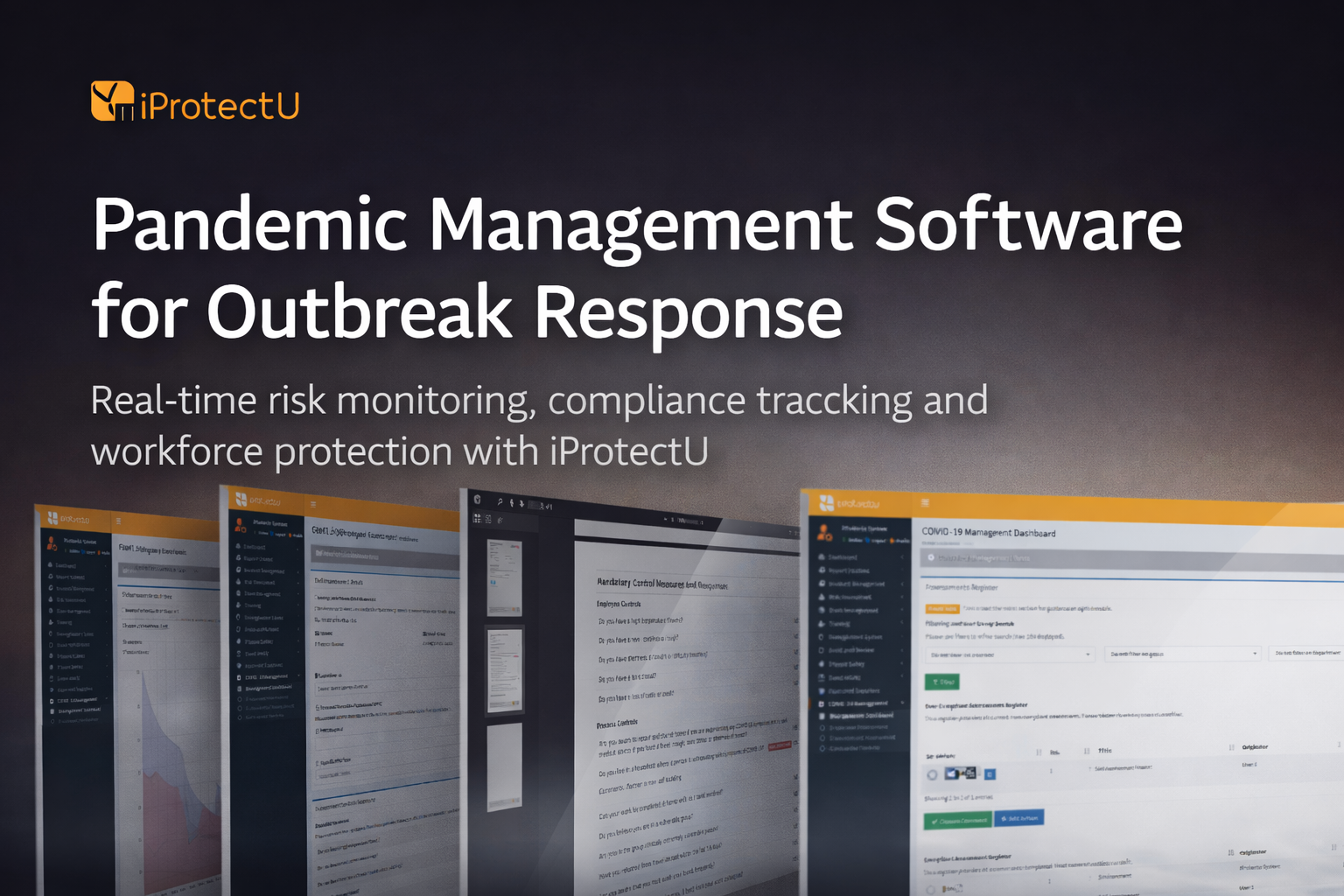
How Pandemic Management Software Helps Organisations Respond to Europe’s Escalating Flu Outbreak
Europe’s rising influenza activity underscores the importance of having the right digital tools in place.
Health and Safety Software » Health and Safety Software News » Health and Safety » Repetitive Strain Injury and Computers

Below are some guidelines to help prevent RSI when using a computer.
Workstation Setup: Make sure that your workstation is ergonomically designed to promote proper posture and minimise strain. Adjust your chair height so that your feet are flat on the floor or on a footrest. Position your monitor at eye level and a comfortable viewing distance. Use an ergonomic keyboard and mouse which help support a natural hand and wrist position.
Posture: Sit upright with your back supported and your shoulders relaxed. Don’t slouch or lean forward. Keep your wrists straight and in line with your forearms. Avoid excessive bending or extension of the wrists.
Regular Breaks: Take short breaks every 30 minutes to an hour to stretch and rest your hands, wrists, and arms. Stand up, walk around, and perform stretching exercises for your neck, shoulders, and hands. Regular breaks help reduce muscle fatigue and tension.
Stretching and Strengthening Exercises: Perform regular stretching and strengthening exercises specifically targeting the muscles and tendons used during computer work. Focus on exercises for the wrists, hands, arms, and shoulders. Consult with a healthcare professional or occupational therapist regarding recommended exercises.
Typing Technique: Practice proper typing technique to minimise strain on your hands and fingers. Use light keystrokes and avoid forcefully hitting the keys. Ensure your wrists are straight and hover them slightly above the keyboard. Consider learning touch typing to reduce excessive movement and strain.
Use Keyboard Shortcuts: Utilise keyboard shortcuts and hotkeys to reduce repetitive mouse movements and clicking. This can help minimise strain on the hands and wrists. Familiarise yourself with common shortcuts for tasks you frequently perform.
Accessories: Consider using supportive accessories such as wrist rests, ergonomic mouse pads, or adjustable keyboard trays to maintain proper wrist alignment and reduce strain.
Workstation Assessment: Periodically assess your workstation setup and implement necessary adjustments. Consult with an ergonomics professional or occupational health specialist to ensure your setup is optimised for your specific needs.
Alternate Tasks: Avoid prolonged periods of repetitive tasks. Take breaks from typing or mouse work; alternate tasks and incorporate different activities. This helps distribute the workload and reduces strain on specific muscles and tendons.
Desk and Chair Alignment: Ensure your desk and chair are properly aligned to support your arms and wrists. The height of your desk and chair should allow your arms to be at a 90-degree angle when typing. Use armrests to support your arms and reduce strain on the shoulders.
Early recognition of RSI symptoms is crucial. If you experience pain, discomfort, numbness, or tingling in your hands, wrists, or arms, seek medical attention. Prompt improvements to your computer usage habits can help prevent the progression of RSI and promote long-term musculoskeletal health.
iProtectU provides display screen equipment assessment forms and allows a user to create, edit and document a risk assessment regarding the use of a computer.
iProtectU brings together the key resources and knowledge of three companies specialising in EHS software development, health and safety, business intelligence and data analytics.
Our vision is to provide fully integrated, cost effective and simple to use health and safety software tools that enable our clients to engage their entire team.
Arrange your demonstration
Let us show you how we can transform your health and safety, risk and compliance management
Please choose a date and time for your demo. We look forward to meeting with you.

Europe’s rising influenza activity underscores the importance of having the right digital tools in place.

iProtectU is proud to support the Final Straw Foundation’s Native Oyster Restoration Project, helping restore

When a national voice like IBEC publishes your perspective, it matters.
This week, iProtectU

Modern HSE software has evolved into a strategic necessity, empowering organisations to manage risk proactively,

Managing personal protective equipment (PPE) doesn’t have to be a paperwork struggle. With iProtectU, safety

From work experience to an Amazon internship. Read how iProtectU helped empower a young talent